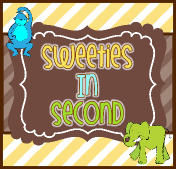School has started! Your classroom looks great, your students are eager to do their best, and the plan book is humming! If your district is like mine, you have also been gearing up to address the Homework Policy!
Whole Brain Teaching offers an amazing Universal Homework Model that can be used as is, or modified to meet your local district requirements. This model is based on a team effort by the class to complete daily assignments using three levels of participation.
Each level is worth a set amount of Team Stars. These stars accumulate each day to earn minutes of a learning game called Mind Soccer!
In my class, when students arrive each morning, they place their daily homework on their desks for me to check in. As I collect, I count out loud the total number of Stars as I move between desks. When I come to a student who has completed Two or Three Star homework, I will call out, “Please give ____ a Ten finger Wooo for bringing in Extra Stars for our class today!” Students quickly shout out “Woooo!” wriggling all ten fingers in the direction of that student! I know you can picture the look on that student’s face as he reaches out to “grab” that Woooo! (You may be thinking right now; what about the student who didn’t return any homework that day? As I move between desks, if I come upon a student with no homework, I keep moving on while making a mental notation to speak to that student privately later. I DO NOT draw attention to that student! Depending on the reason for no homework that day, he may have a one minute rehearsal of Rule 4, Make smart choices!, at recess.)
When I have collected all the homework, I note the total Stars for the day on a special line graph on the front board. Starting on the second day of collection, I write an addition computation on the board of the previous Star total plus the new Star total. Students are asked to do Mental Math and solve the problem. They must blow their answer into their hand and hold it up. When all the cupped hands are raised, we solve the problem out loud so they can check their answer. There are always lots of cheers, and no one is on the spot for making a mistake! Everyone participates! The graph is marked with goal lines for earning the extra minutes for Mind Soccer I mentioned earlier. The blue numbers indicate the Extra Minute goals. I use a different color to plug in the daily totals as we go through the week. The graph starts clean every Monday.
I have 30 students in my class, so the first opportunity to earn a minute would be at the 60 Star mark. At the end of each school quarter, I raise the number of Stars needed to earn the minutes.
You really want to get Team Spirit hyped up, so here is the recommendation from Coach B:
This really works! I am always happily surprised to find students not only eager to volunteer, but also follow through on their commitment the next morning! You may find as I have, that some of those eagerly volunteering are the ones struggling in class, and/or have not always been consistent in returning daily homework! Amazing!
Earlier I mentioned how you can adapt this model to fit your requirements. For my district, that is exactly what I had to do. Here is the outline that is attached to my 2nd grade team’s weekly homework packet. It contains the Star outline, and the directions for the Super Speed Read and Math folders that are checked each Friday for progress.
When you present the homework plan to your parents, it’s very important for them to understand that extra homework turned in for Stars does not count as Extra Credit! Many are shocked when their child comes home excited to do more school work just to earn more minutes to play a learning game! No Treasure Box!
My final comment is that this is the best Homework Plan I have ever used in terms of student participation, parent support, and overall results in academic learning! Last year, my students were voluntarily turning in illustrated book reports, Triple Whammy essays, and yes, original poetry! All for a Star for their TEAM!!
For more detailed information, please visit http://wholebrainteaching.com/ Watch the WBT Webcasts for Universal Homework: http://www.youtube.com/watch?v=cP9LC2hasKs&feature=c4-overview-vl&list=PLDB8B4C4DBF1F7346 Mind Soccer: http://www.youtube.com/watch?v=zDwqGpal2tI
Download Free EBooks for SuperSpeed Read and SuperSpeed Math at http://wholebrainteaching.com/
If you are interested in a copy of my modified Homework Model, you can email me at NancyStoltenberg@WholeBrainTeaching.com






















































